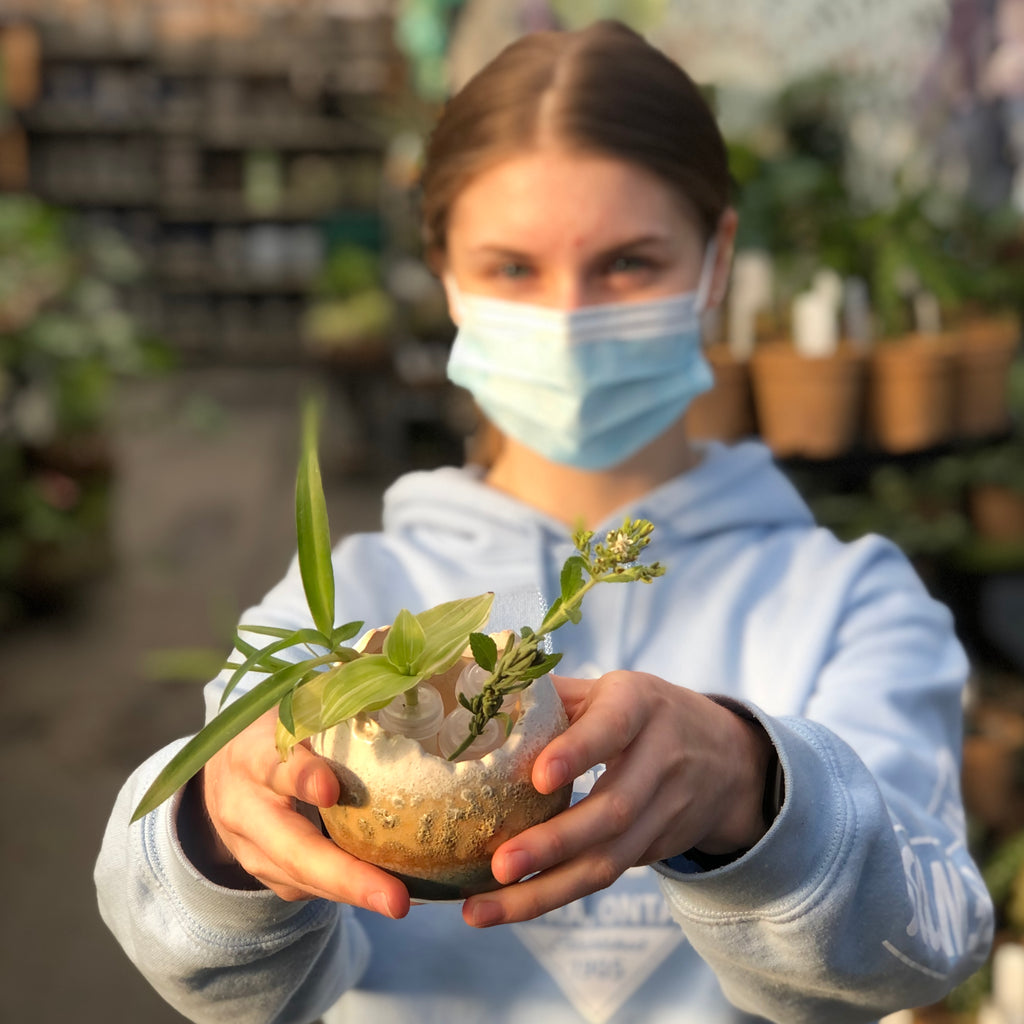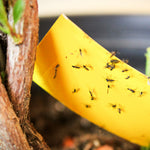Friday December 3 - Sunday, December 5, 2021 we are giving away a FREE take home propagation project; this is the tutorial that goes with the cuttings
We are not quite ready to re-launch our Saturday Garden Club (due to ongoing COVID precautions), but we sure have been hearing from people who miss it! This has got us thinking about little ways to rekindle the plant-geekiness and community that make Garden Club awesome.
One thing we have always loved sharing at Garden Club is take-home planting projects... so that is what we are doing this weekend! This project is inspired by the idea that cutting-grown greenhouse plants for spring are actually being propagated starting now (at least many of the woodier ones). Not only is this activity an opportunity to learn and try something new, but it also connects us with a timeline to spring... and it's never a bad thing to be able to look forward.
For this take-home, we have selected a mix of herbs (Spanish lavender, rosemary, stevia and lemon verbena) and houseplants (tradescantia, spider plant and ivy) to share with you as cuttings, and have prepared these for rooting (we'll talk more about that in a sec). We are making available one herb + one houseplant cutting for everyone who is interested (specific selections are available first-come, first-served). This activity is FREE and no purchase is necessary, but we do ask that it be limited to the two selections per household.
Now for the horticultural part...
The cuttings have received a little preparation on our end, and the following steps are helpful to keep in mind if you decide to take cuttings from your own plants at home. First, we selected stems that are both showing new growth but are also a little woody; these are ideal for rooting at this time of the year, as they hold up well in water but also contain lots of vitality. Second, we gently washed each stem piece in warm soapy water to ensure they are clean and free from pests. This is good practice whenever propagating, as sometimes pests have moved in from outdoors as eggs, and may not be easily visible (plus, there is a surprising amount of pore-clogging dust on indoor plants, which reduces their ability to photosynthesize and respire). Third, we removed lower leaves on the stems before securing the cutting in a florist's water pick (leaves in water = rot).

Unrooted cuttings being washed in warm water and a little natural soap to clean off dust and potential pests.
We have put the unrooted cuttings into florist's picks to keep them fresh, but this is also a space where you can actually root them; alternatively, simply transfer the cuttings to a jar or other water propagation vessel at home. Although woody cuttings can also be rooted in soil, it is far simpler to initiate roots in water. The key to success is changing the water every few days (or even daily!), to ensure adequate oxygen and to mitigate against rot.
For any of the woodier cuttings, there is one additional step that will go a long way towards encouraging roots, which is to carefully slice the lower stem tip at a steep angle before setting back into the water. The best tool for this is a sharp box cutter but quality scissors work too; the goal is to expose a steep section of stem that will be in the water, which allows for better water uptake and also a larger callous from which roots will grow.

Woody cuttings should have their root-end tips cut at a steep angle before going into water propagation, to facilitate a larger callous and increase surface area for water uptake (left one is ready).
Gardeners often wonder if a rooting hormone is required for successful cuttings, so here is our experience: rooting hormone will often make things go faster, but it is not usually required for success. If you have rooting gel on hand, by all means, use it (or any of the non-commercial options like dipping in honey or willow water); if you don't, no need to stress.

In some cases you can find stems on your houseplants that already have roots, making them extra easy to propagate. You can still water culture these to allow the roots to become more significant before transplanting them to an appropriate growing medium.
Your cuttings will enjoy a relaxed winter in a bright window, or under lights if you want to speed things up. But, a neat thing about cuttings is that they are usually completely happy with natural winter light, unlike the mature versions of the same plants which can struggle to look good during short winter days. An ideal location is one where you will notice the developing cuttings and remember to change the water.
Once roots are well developed in water you can move your new plants to soil, starting with a small pot and up-sizing as the roots grow through the drainage holes. Woody cuttings like lavender or rosemary may take a few months to push roots, while the houseplant selections will develop much faster.
Have fun with your new plants!!







